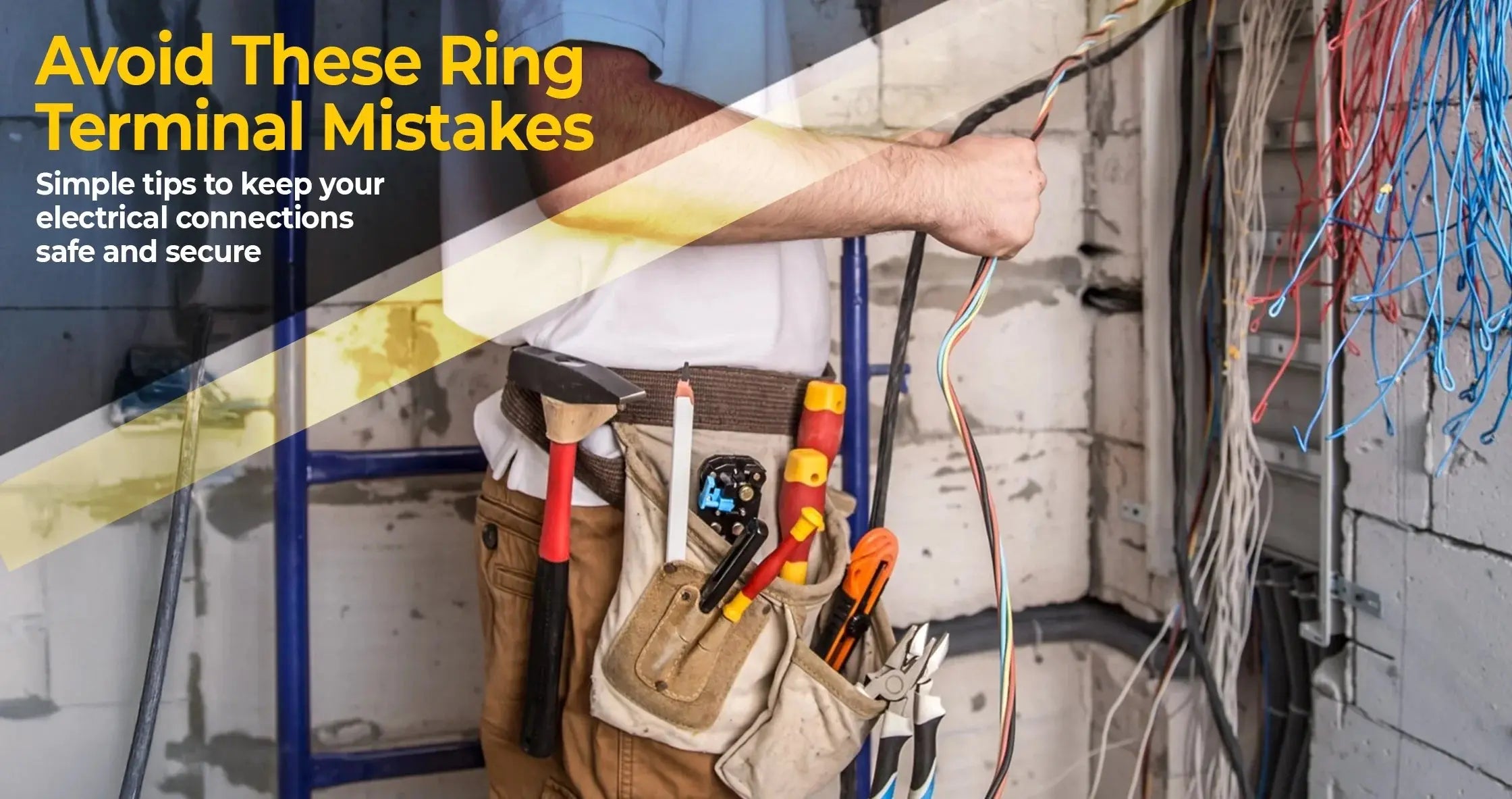When working with electrical components, one crucial aspect often overlooked is the effective use of ring terminals. These connectors offer stable and reliable connections, but mistakes in their application can lead to significant problems. This article will delve into common errors made when using ring terminals and how to avoid them, ensuring safety and efficiency in your electrical setups.
Understanding Ring Terminals
What are Ring Terminals?
Ring terminals, also known as ring terminal connectors, are electrical connectors with a circular opening designed to fit over a screw or bolt. They are typically made from conductive materials such as copper or stainless steel, and can come insulated or non-insulated. Their design allows for secure connections, which is particularly essential in automotive and industrial settings.
Types of Ring Terminals
There are several types of ring terminals available, each suited to different applications. The main types include:
- Insulated Ring Terminals: These feature a protective covering that prevents short circuits, making them ideal for installations where connections might be exposed to moisture or debris.
- Non-Insulated Ring Terminals: These provide better conductivity but are more susceptible to corrosion. They are generally used in dry places where insulation isn’t a critical concern.
- Stainless Steel Ring Terminals: Corrosion-resistant and excellent for harsh environments, stainless steel options provide durability ideal for marine or outdoor applications.
Common Mistakes When Using Ring Terminals
1. Choosing the Wrong Size
One of the most common missteps is selecting a ring terminal that does not fit the wire gauge or stud size. This can lead to loose connections or damage to the terminal. Always check the specifications of the ring terminal to ensure compatibility with the wire you are using.
2. Improper Installation
Improper installation of ring terminals can lead to unreliable connections. Whether you are crimping or soldering, it’s crucial to follow the right technique. Crimping should deform the terminal tightly around the wire, while soldering needs enough heat to create a secure bond without burning the insulation. If in doubt, consult the product specifications.
3. Ignoring Environmental Factors
Different environments affect the performance of ring terminals. For instance, using a non-insulated ring terminal in a damp location could lead to corrosion and eventual failure. Pay attention to the materials used in both the terminal and the insulation to ensure they are suitable for your specific application.
How to Choose the Right Ring Terminal
1. Assess Wire Gauge and Stud Size
Choosing the right ring terminal starts with understanding the wire gauge and stud size it will be used with. Ring terminals are often labeled with the compatible wire gauge to simplify your selection process. Matching the wire gauge to the terminal ensures a snug fit that minimizes risk of failure.
2. Consider Insulation Needs
The choice between insulated and non-insulated ring terminals depends on your application. If your installation will be subject to exposure to moisture or mechanical wear, opt for insulated variants. Insulated terminals provide an additional layer of protection and versatility.
Tips for Successful Use of Ring Terminals
1. Preparation is Key
Prior to using a ring terminal, ensure that the wire is stripped cleanly to the correct length. This allows for proper crimping or soldering, ensuring strong electrical connections.
2. Use Quality Tools
Using the right tools, such as a high-quality crimping tool, can make a significant difference in the installation process. Poor equipment may lead to improper connections that can cause future electrical issues.
Conclusion
Using ring terminals correctly is essential for maintaining secure and efficient electrical connections. By being mindful of sizing, installation techniques, and environmental factors, you can avoid common mistakes. Remember, the quality of your connections is just as important as the components themselves. When selecting ring terminals, consider options like CABAC Terminal Ring Single Grip or CABAC Terminal Ring Stud for reliable and effective solutions. Whether you’re tackling a DIY project or managing a professional setup, these tips will help you achieve the best results.

Frequently Asked Questions (FAQ)
1. Why is insulation important in ring terminals?
Insulation prevents accidental short circuits and protects against moisture or environmental damage, enhancing the durability of connections.
2. Can I use ring terminals for high-current applications?
Yes, heavy-duty ring terminals are designed for high-current applications. Ensure you select a terminal rated for the required amperage.
3. How do I know if a ring terminal is the right size for my project?
Check the specifications for both the wire gauge and stud size functionality, as they should match the labels indicated on the packaging.

Key Takeaways
When using ring terminals, always match the size with the wire gauge and stud size to ensure secure connections. Don’t overlook the impact of insulation based on the application and conditions. Correct installation, quality tools, and thorough preparation will greatly improve the efficacy of your electrical connections.

